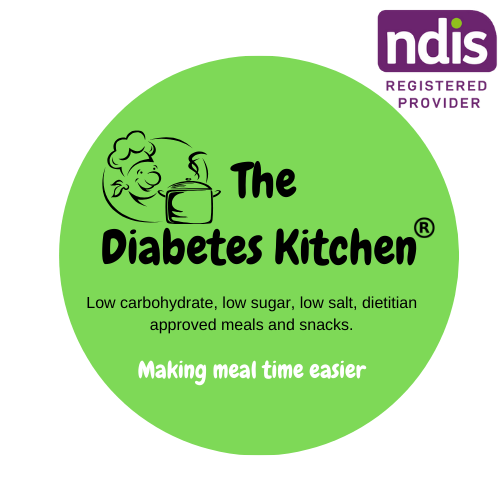Keto and Diabetes: Can the Keto Diet Help You Manage Blood Sugar?
The keto diet has gained popularity as a low-carb, high-fat eating plan known for weight loss and improved energy. But for people managing type 2 diabetes or prediabetes, the question remains: Is keto safe—and more importantly, can it help control blood sugar?
In short, the keto diet may offer benefits for some people with diabetes, especially when used under medical guidance. In this article, we’ll explore how the keto diet works, its potential benefits and risks, and tips for getting started safely.
🔍 What is the Keto Diet?
The ketogenic diet, or keto, is a very low-carbohydrate, high-fat eating plan that encourages the body to enter a state of ketosis. In ketosis, the body uses fat for fuel instead of carbohydrates, which are typically the body's main energy source.
The standard keto macronutrient breakdown looks like this:
-
70–75% fat
-
20–25% protein
-
5–10% carbohydrates
This means you significantly reduce or eliminate foods like bread, pasta, rice, sugar, starchy vegetables, and many fruits—while prioritising meat, fish, eggs, non-starchy vegetables, nuts, seeds, and healthy fats like olive oil and avocado.
✅ Benefits of Keto for People with Diabetes
While keto is not a one-size-fits-all solution, some people with type 2 diabetes or insulin resistance may benefit from a properly structured keto plan.
1. Improved Blood Sugar Control
Reducing carbohydrate intake significantly lowers the amount of sugar entering the bloodstream. Many people see more stable glucose levels and fewer spikes after meals.
2. Improved Insulin Sensitivity
With fewer carbs in the diet, the body may become more responsive to insulin. This can reduce the need for medication in some people—under supervision, of course.
3. Weight Loss
Obesity and type 2 diabetes are closely linked. The keto diet often results in rapid initial weight loss, which can improve insulin sensitivity and reduce diabetes risk factors.
4. Reduced Appetite and Cravings
Fat and protein are more satiating than carbohydrates, which means many people feel less hungry throughout the day when following keto—leading to easier adherence.
⚠️ Risks and Considerations
While the keto diet has shown promise, it’s not suitable for everyone, and comes with important considerations—especially for people with type 1 diabetes or those on insulin or certain medications.
1. Risk of Hypoglycaemia
Reducing carbs while still taking insulin or other glucose-lowering drugs can lead to dangerously low blood sugar levels. Always consult a healthcare provider before starting keto.
2. Nutrient Deficiencies
Cutting out major food groups may lead to deficiencies in fibre, vitamin C, magnesium, and potassium. A carefully planned keto diet with vegetables and supplements is essential.
3. Keto Flu
When starting keto, some people experience symptoms like fatigue, headache, and brain fog—commonly called the keto flu. These are usually temporary but can be managed with hydration and electrolyte balance.
4. Long-Term Sustainability
Keto can feel restrictive. Social events, dining out, and maintaining variety can be more challenging. Consider whether you can maintain this way of eating long-term.
🥦 What Can You Eat on a Diabetic Keto Diet?
Here’s a list of keto-friendly foods that can fit into a diabetic lifestyle:
-
Proteins: Eggs, chicken, beef, fish, tofu, tempeh
-
Non-starchy vegetables: Spinach, broccoli, cauliflower, zucchini, cucumber
-
Healthy fats: Avocado, olive oil, nuts, seeds, coconut oil
-
Dairy: Full-fat cheese, Greek yoghurt (unsweetened), cream
-
Beverages: Water, herbal teas, coffee (no sugar)
Foods to limit or avoid include:
-
Bread, pasta, rice, and cereals
-
Potatoes, corn, carrots (in excess)
-
Most fruits (especially bananas, apples, grapes)
-
Sugary drinks, desserts, pastries
📝 Tips for Starting Keto with Diabetes
-
Talk to Your Doctor
Before making major dietary changes, especially if you take insulin or medications, speak with your GP or diabetes educator. -
Track Your Blood Sugar Frequently
Keto may change your insulin requirements. Monitor your levels to avoid hypoglycaemia. -
Plan Balanced Meals
Focus on variety, especially non-starchy vegetables and healthy fats. Avoid simply swapping carbs for bacon and cheese. -
Stay Hydrated & Mind Your Electrolytes
Drink plenty of water and ensure you're getting enough sodium, potassium, and magnesium. -
Start Slow
You don’t need to go ultra-strict from day one. Gradually reduce carbs while increasing healthy fats and proteins.
🔚 Final Thoughts: Is Keto Right for You?
The keto diet can be a powerful tool for managing type 2 diabetes—but it isn’t the only approach. It’s important to consider your medical history, lifestyle, food preferences, and ability to stick with the plan long-term.
With the guidance of a healthcare professional, many people have successfully used keto to lower their blood sugar, reduce their medications, and lose weight. But like any diet, success depends on the quality of your food choices and consistency.
If keto sounds like a good fit for your needs, take it slow, plan ahead, and focus on whole, unprocessed, low-carb foods that nourish your body and stabilise your blood sugar—naturally.
Discuss any diet change with your health professional first.





